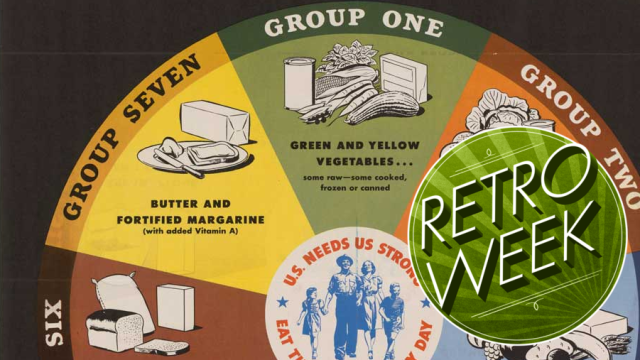Today’s kids have thousands of apps and educational programmes that tell them how to eat healthily. When I was growing up, we learned the Food Pyramid. We categorised grub into four food groups and that was pretty much it. But look back a bit farther, and dietary advice gets a little weirder: in the early 1950s, there were seven food groups, and one was just for butter.
The Basic Seven, as these food groups were called, came from efforts during World War II to keep up nutritional standards in the US when it took extra effort to get variety in your diet. By 1943, when the Basic Seven debuted, rationing was in place for meat, cooking oils, butter and margarine, canned vegetables and dried fruits.
In other words, the Basic Seven’s purpose was different than the food guides we’ve seen in recent decades. Now, we’re trying to limit how much we eat, because obesity and heart disease and diabetes are far too common. Modern food guides give serving sizes. But at the time, the government was just trying to make sure people got their vitamins.
That in mind, the Basic Seven was to be used as a checklist. Each of the seven food groups contains specific nutrients that you don’t want to miss: Oranges, tomatoes, and grapefruit are good sources of vitamin C, for example, so they get their own category separate from other vegetables. Butter and fortified margarine provide fat and vitamin A.
After wartime, the divisions in the Basic 7 were less important. This 1954 video gave children a five-finger mnemonic that called for “bread and butter” as a food group, alongside fruit, vegetables, meat and eggs, and milk and cheese. “Those are the foods you should eat every day if you want to be healthy,” the film advises:
In 1956, the US Department of Agriculture decided this was too complicated, and simplified the system into the four food groups that probably look familiar today. (MyPlate separates fruit and vegetables, making five.) But even as late as the 1960s, people still remembered the Basic Seven as a guide to a balanced diet. And it’s not a bad plan for today, as long as you remember that it’s a checklist, not a plate to be divided equally among the groups.

Comments